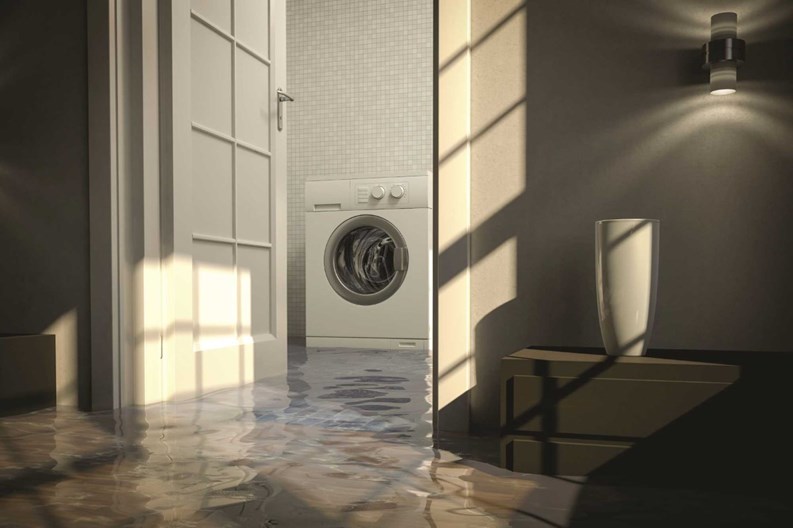According to a 2013 poll by the Insurance Information Institute, only 13 percent of American homeowners have some sort of flood insurance policy, and those living in New York City are low on that list.
After all, New York City certainly isn't New Orleans, or a coastal town in the Carolinas for that matter, so the idea of torrential rains causing havoc with floods is rarely anything people here have to worry about—at least that was the thinking before Superstorm Sandy came barreling in two years ago. Thanks to the effects of that storm, people and those in charge of multifamily buildings are gobbling up flood insurance like never before.
Mark Carrasquillo, a veteran insurance broker with E.G. Bowman Co., Inc., an independent insurance brokerage in Manhattan, says New York City is as much at risk of flooding as one would expect of any island.
“In New York City it’s usually a Nor’easter or a hurricane that brings a storm surge of water from the Atlantic and swells the rivers and creeks in and around us,” he says. “I am sure that Superstorm Sandy was an eye opener for many unit owners and for the insurance community.”
Superstorm Sandy came at the New York metropolitan region directly, a frontal assault of wind and waves along hundreds of miles of the coast. More than 900 buildings were destroyed, and at least another 12,000 sustained major damage, according to initial estimates by the Federal Emergency Management Agency (FEMA). And because of the hurricane, new flood zone maps were created. Sections of southern Brooklyn, the Rockaways and Staten Island not previously labeled at risk were added to flood zones on the new maps.
The Storm Surge
A 2013 study of coastal areas by CoreLogic found that 4.2 million homes, with $1.1 trillion in total property exposure, are at risk of damage caused by hurricane storm surge flooding. FEMA estimated that nationwide economic losses from Hurricane Sandy ran about $50 billion.
“Among the most densely populated metropolitan areas, the New York City metro area, which includes Long Island and the New Jersey coast, has the highest exposure to potential storm surge damage ($206 billion),” says Loretta L. Worters, vice president of communications for the Insurance Information Institute (I.I.I.). “The next four areas in terms of exposure were Miami ($100 billion), Virginia Beach ($73 billion), Tampa ($55 billion) and New Orleans ($43 billion).”
In a multifamily setting like a condo building or co-op, flood insurance is purchased by both individual owners and the buildings themselves. Generally speaking, upper floors aren’t as great a risk as ground floor or basement units.
“Flood insurance is bought by the co-op/condo buildings and shareholders/owners who pay their proportionate share of the cost through maintenance charges and common charges,” says Patricia Kantor, a partner at the law firm of Edwards Wildman Palmer, LLP. “Buildings had flood insurance before Sandy and I’m not sure much changed there. What did change was everything else concerning floods, from having backup generators to better emergency preparedness.”
The problem is that flood insurance is not as straightforward as other policies—it’s administered by the federal government and has a few other wrinkles that set it apart. A savvy condo or co-op will do proper due diligence to ensure its insured properly.
What Makes a Flood?
In insurance-ease, a flood doesn’t refer to all damage done by running water—for example, if your basement drains back up and sends water into a ground floor apartment, it won’t be covered.
“Flood insurance covers direct physical losses by flood and losses resulting from flood-related erosion caused by heavy or prolonged rain, coastal storm surge, snow melt, blocked storm drainage systems, levee dam failure or other similar causes,” Worters says. “To be considered a flood, waters must cover at least two acres or affect two properties.”
Floods can occur for a variety of reasons—from torrential rain backing up sewers to bad drainage to rising rivers.
“In New York, it is generally from hurricane storm surge,” Worters says. “However, large amounts of snow combined with rain could cause severe flooding. New York City also experiences flooding from thunderstorms and other intense rainstorms. This is called flash flooding.”
Flash floods can strike any time with little or no warning. City streets can become rivers in seconds. Most flash flooding is caused by slow-moving thunderstorms, thunderstorms repeatedly moving over the same area, or heavy rains from hurricanes and tropical storms. Blocked catch basins, storm drains, water main breaks, and sewer lines can also lead to flooding. Flash flooding is the number one cause of deaths associated with thunderstorms, claiming more than 140 lives each year in the United States.
Kantor says what most people learned from Superstorm Sandy is that New York City has more exposure than anyone realized.
“The city has many low-lying areas, in many cases surrounded by water,” she says. “Superstorm Sandy flooding was caused by a variety of events including rising rivers, bad drainage and backed up sewers. It was the perfect storm.”
Insurance Issues
Because of frequent flooding of the Mississippi River during the 1960s and the rising cost of taxpayer-funded disaster relief for flood victims, Congress in 1968 created the National Flood Insurance Program. It has three mandates: to provide residential and commercial insurance coverage for flood damage, to improve floodplain management and to develop maps of flood hazard zones.
The NFIP is administered by FEMA, now part of the Department of Homeland Security. Flood insurance was initially only available through insurance agents who dealt directly with the federal program. The “direct” policy program has been supplemented since 1983 with a private/public cooperative arrangement, known as “Write Your Own,” through which a pool of insurance companies issue policies and adjust flood claims on behalf of the federal government under their own names, charging the same premium as the direct program.
According to Carrasquillo, the property owner buys flood coverage but there is no law on the books forcing you to buy it. However, you may be contractually obligated to buy flood insurance by your lending institution.
“The bank has an insurable interest in the property and they will demand that you purchase flood insurance as part of the loan process,” he says. “The condo or co-op board usually has a master policy, and if the coverage amount does not satisfy the bank, they may ask the unit owner to secure flood coverage regardless of the floor their unit is on.”
However, if the flood waters, rising river, storm surge etc. cannot damage your unit, “then I think purchasing flood insurance is a waste of money,” Carrasquillo says.
Worters says damage to vehicles is covered under the comprehensive section of an auto insurance policy but there is no coverage for flooding in standard homeowners, or renters policies or in most commercial property insurance policies.
“The NFIP makes federally backed flood insurance available in communities that agree to adopt and enforce floodplain management ordinances to reduce future flood damage,” she says. “More than 20,000 communities across the country participate in the program. NFIP coverage is also available outside of the high-hazard areas.”
The NFIP provides coverage for up to $250,000 for the structure of the home and $100,000 for personal possessions. Private flood insurance is available for those who need additional insurance protection, known as “excess coverage,” over and above the basic policy or for people whose communities do not participate in the NFIP.
Some insurers have introduced special policies for high-value properties. These policies may cover homes in inland areas and/or provide enhancements to traditional flood coverage. The NFIP policy provides replacement cost coverage for the structure of a home, but only actual cash value coverage for possessions.
Homes are covered for up to $250,000 on a replacement cost basis and the contents for up to $100,000 on an actual cash value basis. Replacement cost coverage pays to rebuild the structure as it was before the damage. Actual cash value is replacement cost minus the depreciation in value that occurs over time. Coverage for the contents of basements is limited. Coverage limits for commercial property are $500,000 for the structure and another $500,000 for its contents.
It’s important to realize that there is a 30-day waiting period before the coverage takes effect, so it is important not to wait until the last minute to buy a flood insurance policy.
Making a Claim
If a building experiences damage from a flood and wants to make a claim, it must follow the correct procedure. Worters notes to make sure you have the following information handy: The name of your insurance company, your policy number and a telephone and/or email address where you can be reached at all times.
Step one is to contact the agent or insurance company to file a claim immediately. An adjuster should contact you back within a few days of filing your claim. The next step is to separate damaged from undamaged property so you can provide evidence to your adjuster of the damage to the home and possessions to prepare a proper repair estimate. It is recommended to take photographs of all of the damaged property, including discarded objects, structural damage, and standing floodwater levels. Step three is to fill out a Proof of Loss form for your official claim for damages.
“You'll need to file this claim with your insurance company within 60 days of the flood,” Worters says. “This document substantiates the insurance claim and is required before the National Flood Insurance Program or insurance company can make payment.”
A claim payment will be awarded once you and the insurer agree on the amount of damages and the insurer has your complete, accurate, and signed Proof of Loss form. If major catastrophic flooding occurs, it may take longer to process claims and make payments because of the sheer number of claims submitted. Resolution all depends on the severity of the damage and how many other people are affected.
Final Thoughts
The Biggert-Waters National Flood Insurance Reform Act of 2012 provides long-term changes to the National Flood Insurance Program. Under the new law, rates are likely to increase overall to reflect the true flood risk of condos in the area and many insurance discounts will be eliminated.
“Floods do not occur as often as we think they do, and a single incident will not generally affect the rate for the following year,” Carrasquillo says. “However, a storm such as Sandy did force the government to look at old flood maps throughout the country and start re-zoning, which will increase rates significantly.”
Keith Loria is a freelance writer and a frequent contributor to The Cooperator.







Leave a Comment